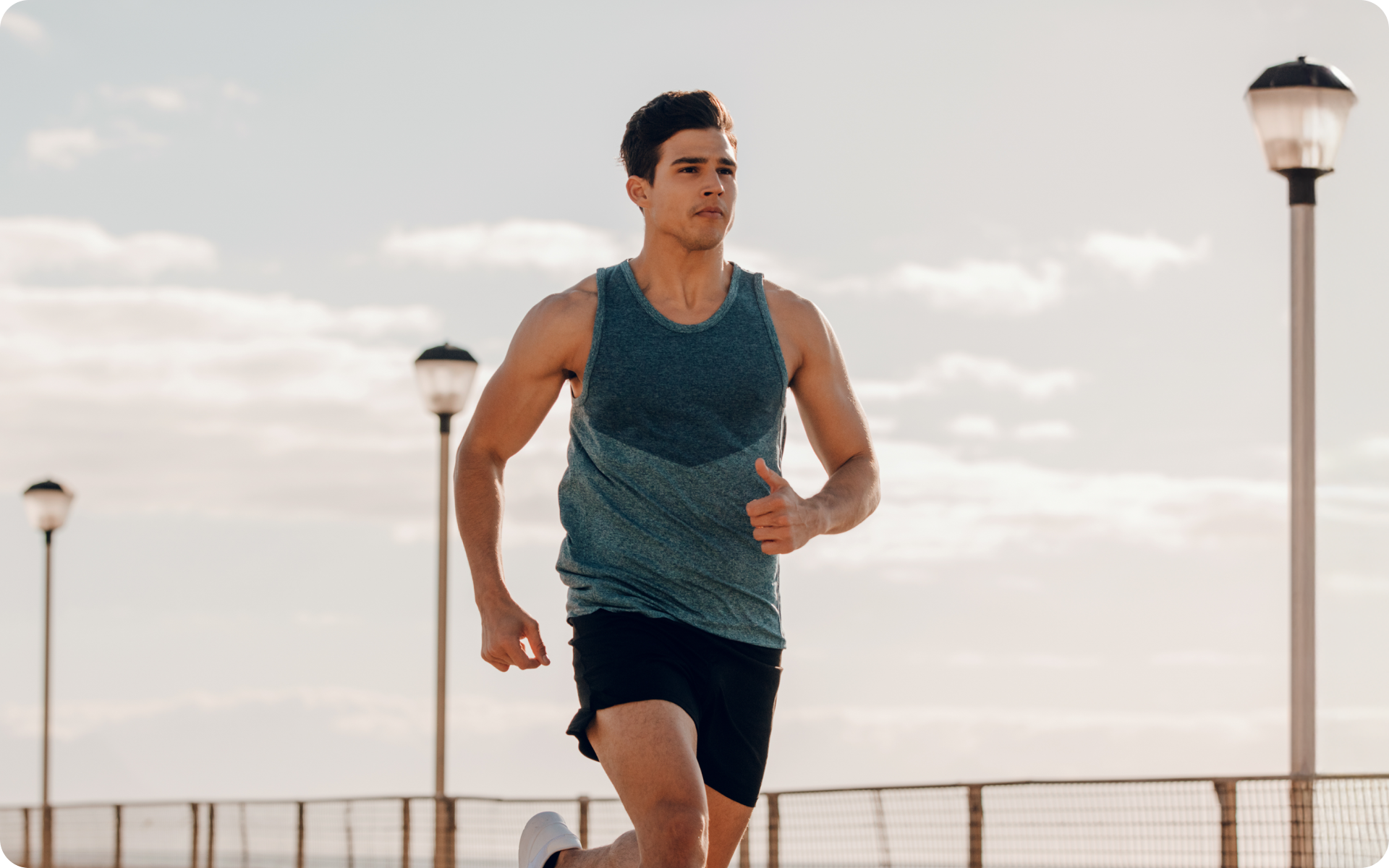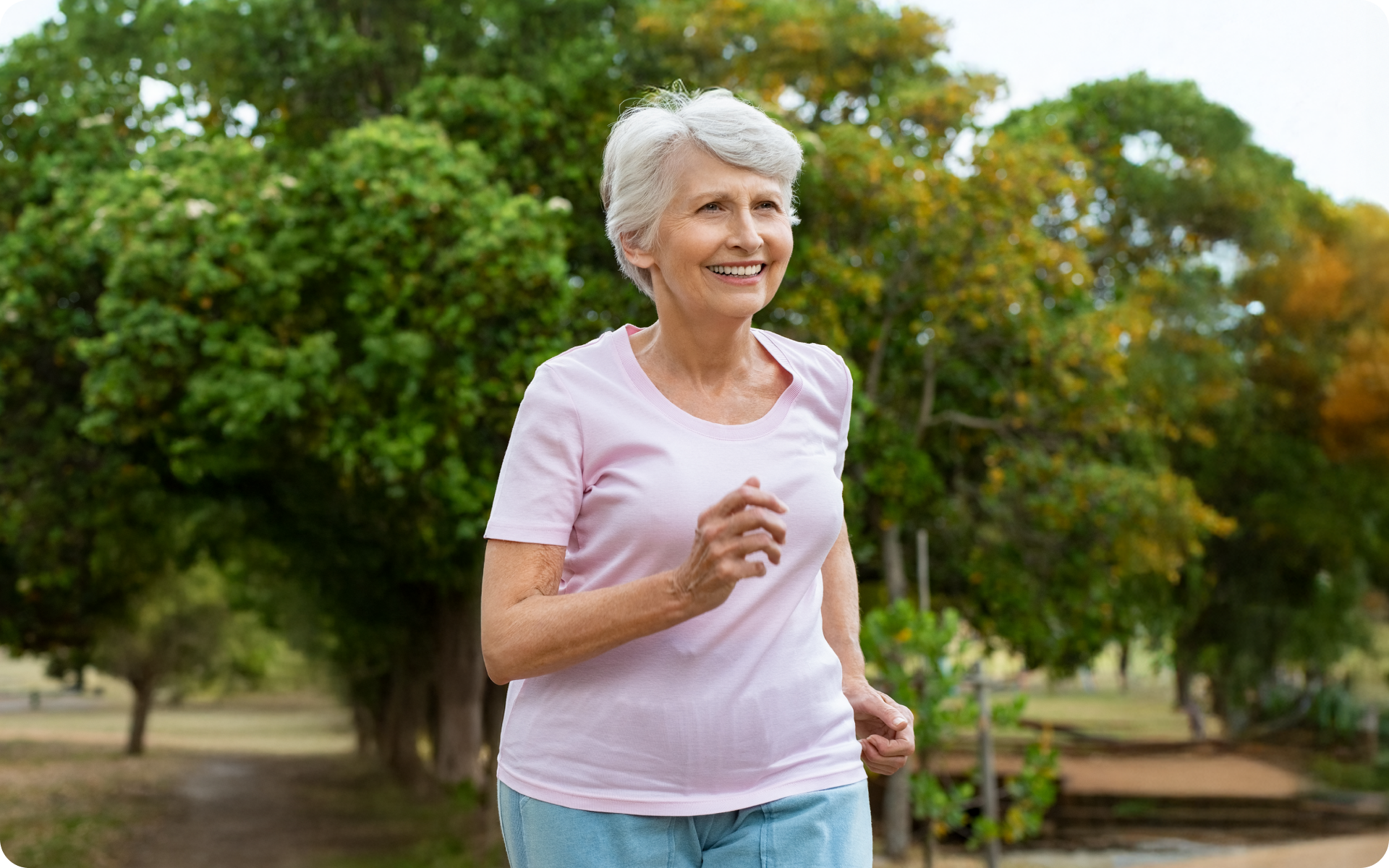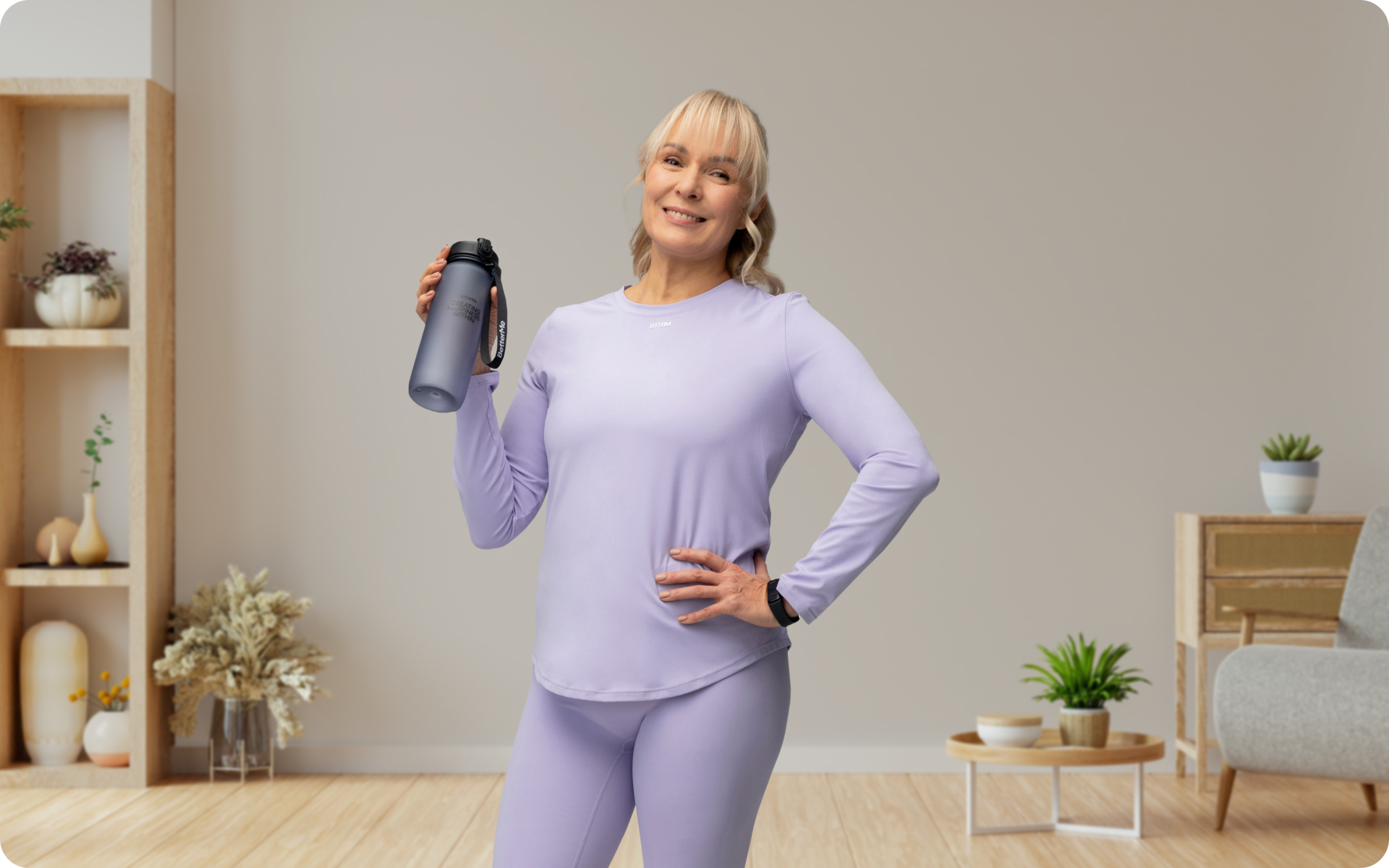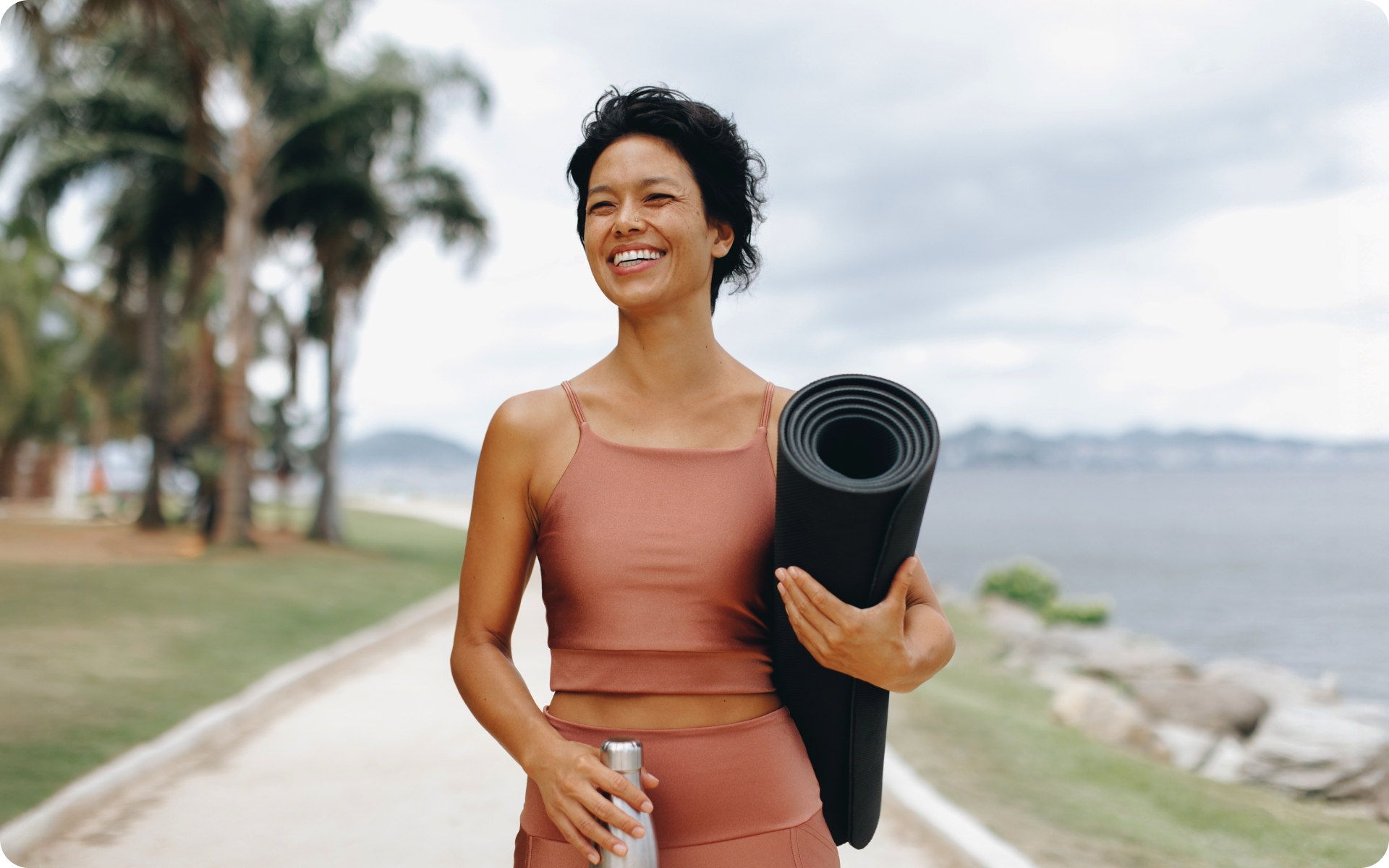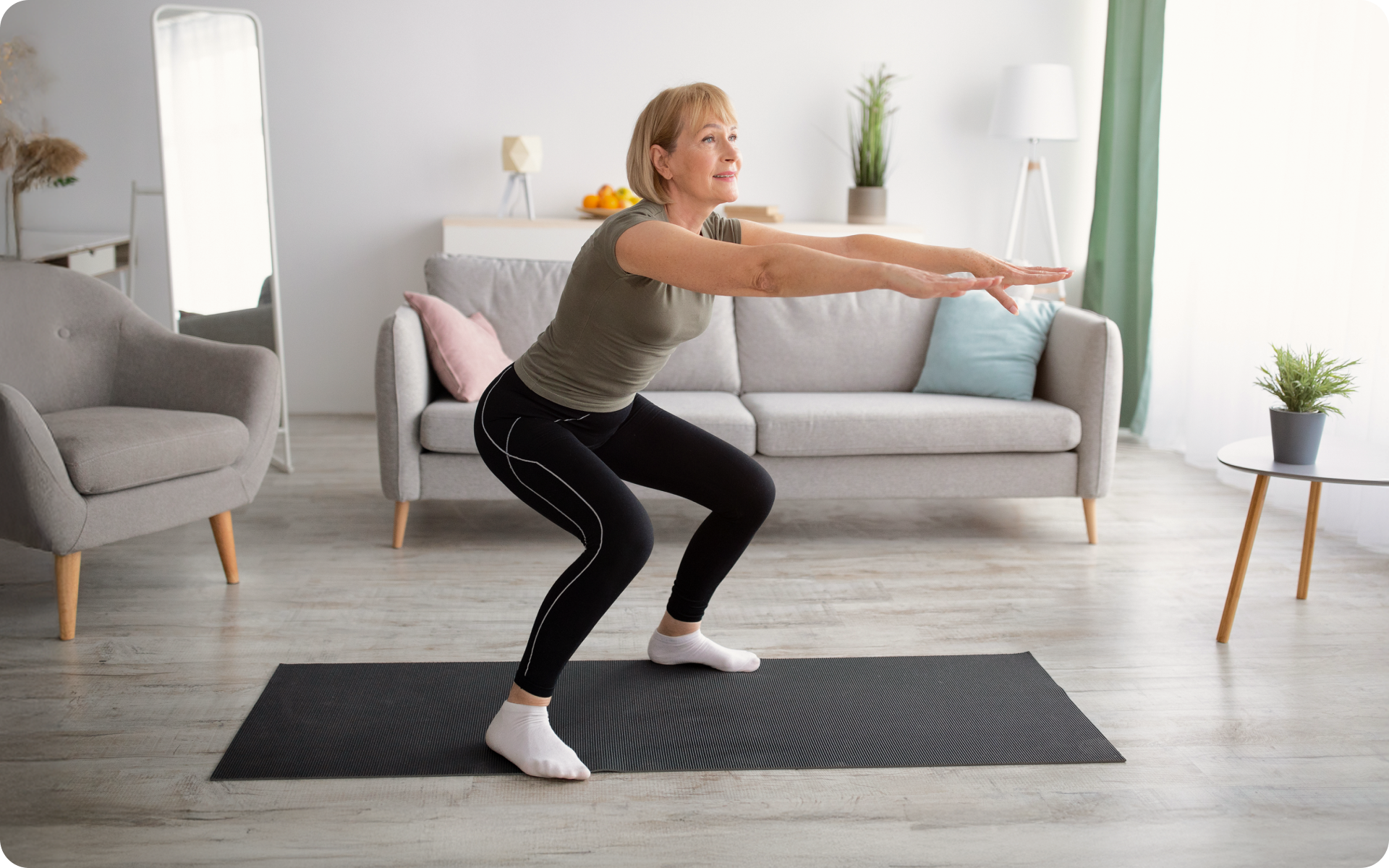Let’s face it. Most of us tend to ignore stretches, both pre and post-workout. As much as it looks okay to just jump straight into that exercise and get it over with, it’s not. Stretching before and after a workout routine goes a long way to ensure your muscle and joint safety. Now, what does static stretching mean?
Static stretching is a classic post-workout routine that is largely famed for its effectiveness in relaxing your muscles. Primarily, your muscles are extended and held in a single position for a while during these routines. The only question left is, “why is static stretching good as a post-workout routine?” Keep reading to find out.
What Is Static Stretching?
The beauty of static stretches is that we do them, even without noticing. When you wake up after a good nap or a long car ride, you sprawl out and stretch. It feels good, right? Well, they are static stretches.
So how can we define static stretching? Simply put, it is when you hold your stretching position for a certain amount of time, most commonly 30-60 seconds. Essentially, static stretches elongate a specific muscle group which improves their flexibility and mobility.
There has been a lot of controversy surrounding the effectiveness and usefulness of static stretching. Some research has suggested that static stretches can modestly impede performance in the short term. It has also been proven that static stretching results in no decrease in long-term performance. For this reason, static stretching is most effective as a post-exercise cool-down routine.
Stretching of any kind, whether static or dynamic, is not only for athletes or gym-goers, and you should make a habit of stretching to protect the integrity of your muscles, tendons, ligaments, and fascia. So, what are some of the benefits of static stretching exercises? We find out in the next section.
Read More: Beginner Stretches To Level Up Your Stretching Game
What Are The Benefits Of Static Stretching?
Here’s a list of some of the incredible benefits you’ll get from including static stretches in your post-workout routine.
Improved Flexibility
Your muscles are already warmed up at the end of your workout. Stretching at this time helps increase your range of motion in the joint or muscle of your choice (4). Range of motion is just a fancy way of saying how far your joint or muscle can move in a specific direction.
This creates a domino effect of ease of movement and your daily tasks eventually become easier to handle. So regardless of your age, strengthening and stretching your muscles is always a good thing to do.
Reduced Pain And Stiffness
Sometimes your muscles become tense or tight after a workout session. This is a normal physiological process related to muscular adaptation and the short-term muscular waste products that are produced during physical activity. Studies have found that static stretching is effective for relieving stiffness in tight muscles (2).
Stretching will reduce post-workout pains in your muscles and joints and make your everyday tasks simpler and easier.
Therapeutic Effects Of Decreased Stress
Stretching can be great for calming your mind. As a result, it may significantly reduce your stress levels. You should take your time when stretching and not rush through it. Use the time when you’re stretching for relaxation and meditation and make it your “me time”.
You can also include good breathing techniques to get the full benefits. Inhale before going into the stretch, and exhale when coming out of the stretch. Afterward, maintain a stable breathing rate. Do this in your static stretching exercise and experience a calm and relaxed mind.
Increased Performance
Static stretches can improve your muscle’s flexibility. Flexible muscles are more agile, are faster, and are stronger (4). These attributes ultimately improve your performance any time you work out or play a sport.
A study in 2018 showed that blood circulation is greatly enhanced in animals after stretching (3). Stretching improves blood circulation, but how is it related to reduced muscle soreness?
Increased Blood Flow, Minimizing Muscle Soreness
Soreness after an engaging workout is not uncommon. Most people experience this regularly. Stretching after working out can help reduce muscle soreness.
Simple answer: Blood transports nutrients to your muscles that repair them by speeding up the clearance of physiological byproducts that cause soreness. Therefore, better blood circulation equals faster muscle repair and shorter recovery periods (3).
Reduced Tension Headaches
Tension headaches can be a real nuisance. They are something you don’t want at any time, but especially after that intense workout session. When you add conscious breathing to your static stretches, this can help alleviate tension headaches.
Remember, the key is in slow, steady, and relaxing breathing patterns when you stretch. This will calm you down and release the stress that causes your headaches.
Static Stretches Can Help With Arthritic Pain
Too much inactivity can make your muscles tighten and lose their flexibility over time. This may result in aches and pains in the muscles and tissues surrounding the joints. Also, as you age, your joints can develop arthritis that causes pain and makes daily activities such as walking difficult.
Static stretches help relax and loosen your joints, which will ultimately make movement easier (2). If you’re having problems stretching, try using bands, towels, or equipment that will make the process easier and safer. They decrease the necessary range of motion to perform a stretch with proper form, and improve stability during stretching.
If you’ve mustered up the courage to crush your weight loss goal, let Betterme take the sting out of this demanding process. Our app will help you restructure your habits, remold your life and crank up your fitness results!
What Is The Difference Between Static And Dynamic Stretching?
Static vs dynamic stretching: which is better? In practical terms, this is not a fair comparison between the two forms of stretches. Each is meant to be utilized at different points of your workout routine, which makes both of them equally valuable.
So what differentiates the two? Why is one form best suited as a pre-workout routine and the other a post-workout routine? Let’s find out.
Static stretching ideally involves holding one position without moving to stretch your muscles. Your muscles are generally relaxed and elongated during this period. Research has suggested a variety of hold durations to be effective, but it is generally agreed that hold times of 30 seconds to a minute per stretch will yield positive effects.
Dynamic stretching is a little different. Your body is continuously engaged in active movements that are slow and controlled. This is what makes them the ideal pre-workout routine as your muscles are warmed up during the movements.
With this information, you now know when to do static stretching and when to do dynamic stretching. So it never should be a question of which variant is better. The question should be: At what point of your exercise can you get the full benefits of each exercise?
Below are some examples of static stretching exercises that will improve your post-workout routines.
Static Stretching Examples For Post-Workout
Try these static stretches in your next post-workout routine to work on each of your major muscle groups:
Overhead Triceps Stretch
- Standing with your feet hip-width apart, roll your shoulder back and down to ease any tension.
- Extend your right arm toward the ceiling and while bending your elbow to bring your right palm down. This movement should be toward the center of your back.
- Next, bring your left hand up. This should initiate a downward pull to your right elbow.
- Maintain this stretch for 30 seconds to a minute and switch to the other arm. Do 3 reps on each side before trying to go deeper.
Head-To-Knee Forward Bend
- Find a comfortable flat surface and sit on it.
- Extending your left leg in front of you, place the sole of your right foot inside your left thigh.
- Breathe in and lift your arms overhead.
- Lengthen your spine as you exhale, then hinge forward at your hips.
- Rest your hands on either your legs, foot, or the floor.
- Remain in this position for 30 seconds to a minute.
- Repeat this procedure for the other side.
This stretch primarily targets your hamstrings.
Biceps Stretch
- Standing upright, put your arms behind your back, interlacing your hands at the base of your spine.
- Straighten your arms, then turn your hands, ensuring your palms face downward.
- Raise both arms as high as you can without leaning your trunk forward. Make sure you feel some stretch in your shoulders and biceps.
- Hold this stretch for 30 seconds to a minute.
Cobra Pose
- Lying on your stomach, place your hands directly under your shoulders with your fingers facing forward.
- While pressing into your hands and squeezing your elbows into your torso, lift your head, chest, and shoulders.
- Keeping your elbows slightly bent, allow your head to drop back. This deepens the pose.
- Maintain this position for 30-60 seconds. Repeat 1-2 times.
Seated Butterfly Stretch
- Sit on the floor while keeping your back straight and abs engaged.
- Put the soles of your feet together in front of you, then allow your knees to bend out to the side.
- Place your hands on your feet, then pull your heels toward you. This action should allow your knees to relax as they move closer to the floor.
- Inhale and hold this position for 30 seconds to a minute.
Quadriceps Stretch
- Hold one ankle using your hand from the same side. Make sure your stomach muscles are tightened to prevent your back from arching.
- Bend your knee while you extend your thigh backward.
- Bring your ankle up toward your butt. Your knee should always be aligned to your hip. It shouldn’t be angled inward or outward to your body.
- Hold for 30 seconds to a minute, then switch legs.
- This should trigger a stretch in front of your thigh.
Posterior Capsule Stretch
- Relax your shoulders and bring one of your arms across your body at chest height or slightly lower.
- Use your other arm to hold the outstretched arm just above your elbow while gently pulling it toward your body.
- Hold for 30 seconds to a minute.
- Repeat this for the other side.
Reasons why BetterMe is a safe bet: a wide range of calorie-blasting workouts, finger-licking recipes, 24/7 support, challenges that’ll keep you on your best game, and that just scratches the surface! Start using our app and watch the magic happen.
Hip Flexor Stretch
- Start by placing one knee down with the opposite foot flat on the ground.
- Gently squeeze the glutes of your front leg while tucking your tailbone slightly forward.
- Gently push your pelvis forward without arching your back.
- Hold for 30 seconds to a minute, then switch legs.
- You should feel the stretch in the front of your back hip.
Chest Stretch
- Lie down with your chest on a flat surface.
- Make sure your elbow is in line with your shoulder or slightly higher while you extend one arm straight out to the side.
- Use your other arm to push your chest off the floor gently. This should make you feel the stretch of the extended arm in your chest.
- Hold for 30 seconds to a minute.
- Repeat this stretch on the other side.
Glute Stretch
- Get into a sitting position on the floor and extend one leg while crossing the opposite leg over.
- Place the foot of your crossed leg on the outside of your extended leg.
- Pull your bent knee and thigh gently toward your chest while maintaining an upright spine.
- Hold for 30 seconds to a minute.
- Repeat this stretch on both legs.
Conclusion
Stretching is an important part of any physical activity that you should never downplay. If you spend your day in a relatively sedentary position, you shouldn’t jump straight into exercises afterward. You will just expose yourself to unnecessary and avoidable muscle injuries.
Stretching should therefore be incorporated before and after your exercise for maximum safety. Static stretching will specifically increase your muscle flexibility and ultimately improve your stability. To get the best results, strive to stretch at least twice a week. It doesn’t matter whether it is static or dynamic; both are just as beneficial when done at the right time.
DISCLAIMER:
This article is intended for general informational purposes only and does not serve to address individual circumstances. It is not a substitute for professional advice or help and should not be relied on for making any kind of decision-making. Any action taken as a direct or indirect result of the information in this article is entirely at your own risk and is your sole responsibility.
BetterMe, its content staff, and its medical advisors accept no responsibility for inaccuracies, errors, misstatements, inconsistencies, or omissions and specifically disclaim any liability, loss or risk, personal, professional or otherwise, which may be incurred as a consequence, directly or indirectly, of the use and/or application of any content.
You should always seek the advice of your physician or other qualified health provider with any questions you may have regarding a medical condition or your specific situation. Never disregard professional medical advice or delay seeking it because of BetterMe content. If you suspect or think you may have a medical emergency, call your doctor.
SOURCES:
- Acute effects of static stretching on muscle hardness of the medial gastrocnemius muscle belly in humans: an ultrasonic shear-wave elastography study (2014, pubmed.gov)
- Acute effects of static stretching on passive stiffness and postural balance in healthy, elderly men (2017, pubmed.gov)
- Daily muscle stretching enhances blood flow, endothelial function, capillarity, vascular volume and connectivity in aged skeletal muscle (2018, pubmed.gov)
- The Effectiveness of PNF Versus Static Stretching on Increasing Hip-Flexion Range of Motion (2018, pubmed.gov)




